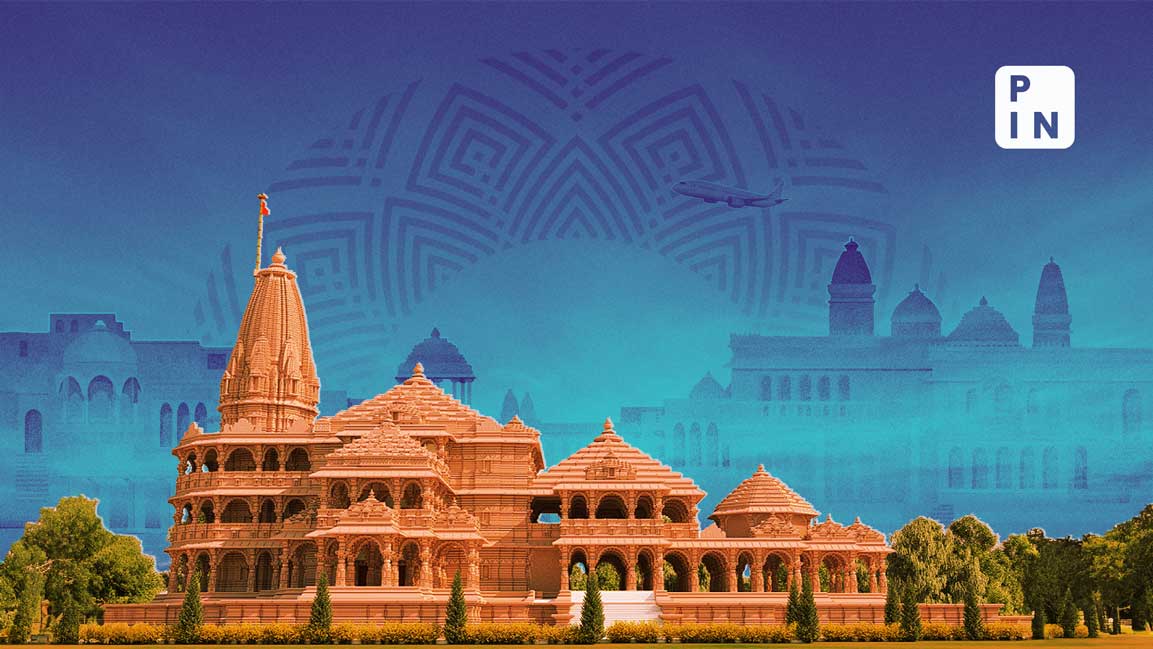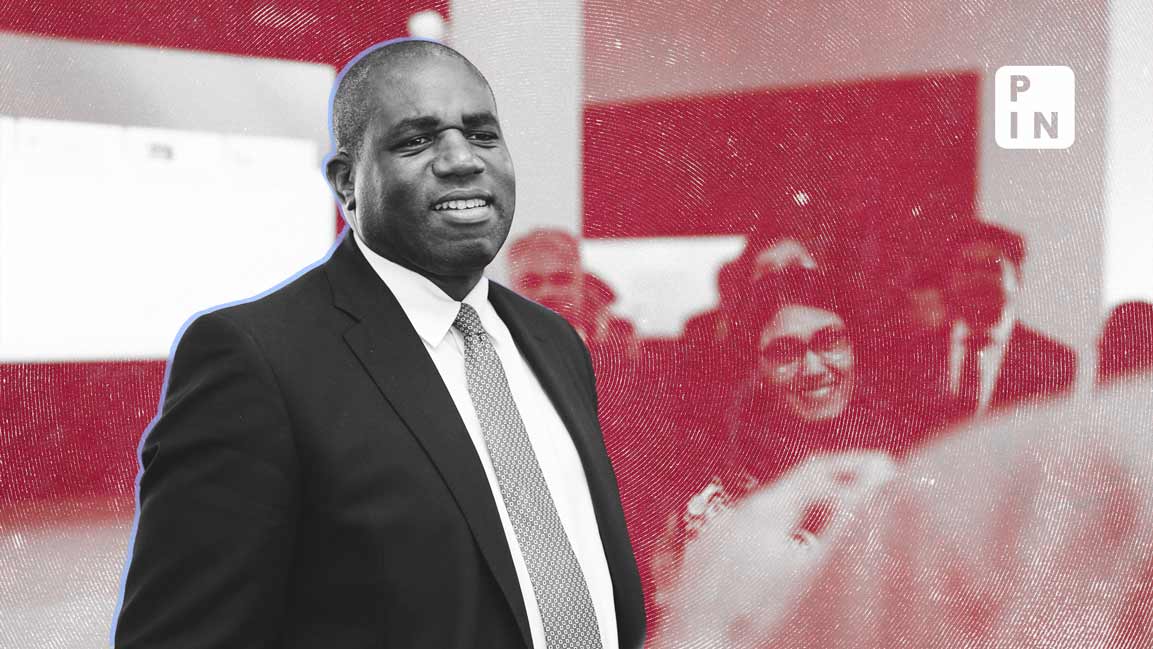- | 1:30 pm
All roads lead to Ayodhya as Modi consecrates Ram temple
As Ayodhya gets soft-launched on the global tourism map with the opening of the Ram temple, everything linked to the temple town, including hospitality and retail, is seeing a boom

The long-winding dispute between Hindus and Muslims over the Ram Janmabhoomi temple and the Babri mosque had kept Ayodhya off the tourist map for decades.
Recalling earlier challenges in attracting visitors to Ayodhya, Prateek Hira, the Uttar Pradesh state chairman of the Indian Association of Tour Operators, said, “No tourist wanted to travel to Ayodhya. People would think they would be caught in some problem if they came.”
All that is set to change now.
Prime Minister Narendra Modi’s inauguration of the temple on 22 January, soft-launching Ayodhya on the global tourism map, has sparked off a wave of excitement.
Hira, who runs a travel agency in Lucknow, has been flooded with queries from pilgrims, youths, and foreigners keen on traveling to the newest travel destination.
The consecration event attracted wealthy tourists and non-resident Indians, who paid up to ₹20,000 a day for basic hotel accommodation.
The temple is expected to draw over 300,000 visitors daily once it opens to the public.
The initial euphoria over the inauguration of the temple had boosted the share prices of various businesses, from hospitality chains and mapping firms to tenting companies and travel-related firms like IRCTC Ltd and IndiGo airline, which recently announced flights from Delhi and Ahmedabad to Ayodhya. Since then, some of the stocks have corrected.
Actor Amitabh Bachchan reportedly bought a 10,000 sq. ft plot in The Sarayu, a 7-star mixed-use enclave being developed in Ayodhya by real estate firm House of Abhinandan Lodha, for ₹14.5 crore (about $1.5 million).
‘Global spiritual capital’
The temple represents a significant achievement for the BJP government, which has invested several billion rupees to modernize the ancient town, including the development of an international airport, luxury hotels, a Ramayana-themed park, and a new township.
This redevelopment is poised to showcase Ayodhya as a “global spiritual capital,” Vishal Singh, vice-chairman of the state government’s key agency overseeing Ayodhya’s development, said ahead of the temple inauguration.
Locals said Ayodhya, once fully developed, will overshadow local pilgrim destinations and will be compared with Vatican City and Mecca, as the new center of the Hindu faith.
Leaders of the Vishwa Hindu Parishad (VHP), the organization that is at the forefront of the construction, said the temple will become a “national monument.”
“Lord Ram represents equality and unity, transcending religions and castes,” said Sharad Sharma, a VHP spokesperson. “The temple, inspired by Ram’s ideals, is a collaborative effort involving Buddhists, Jains, Sikhs, and Muslims.”
The opening of the temple is not just expected to change the fortunes of Ayodhya but also give a major impetus to religious tourism across India.
Spiritual tourism is projected to be one of the biggest growth drivers of the sector in the next five years, Ritesh Agarwal, chief executive officer of hotel aggregator OYO Rooms, posted on X.
Ayodhya has been topping the charts as the new favorite holy destination. In December, OYO saw a 70% jump in users visiting Ayodhya as against beach holiday hotspot Goa (50%) and hilly Nainital (60%), Agarwal said.
Ayodhya currently sees a daily influx of up to 80,000 tourists, and these numbers are only going to jump after 22 January, with daily arrivals of at least 200,000 tourists and as many as 800,000 pilgrims during festivals, officials said.
Early start
The surge in excitement to visit Ayodhya has stumped resident Sunil Rastogi, who recalls his hometown being mired in controversies and exploited as a tool for political gain during elections.
“After elections, all the promises of development would fade away,” he said. The legal battle over the disputed land had stalled the town’s development for an indefinite period.
Things began to look up after the Supreme Court delivered the final verdict in 2019, clearing the way for the construction of the temple.
“In anticipation of a surge in visitors, Rastogi developed a high-end property, Krinoscco Hotel, named after the mythological Greek god Kronos, who ruled the world before Zeus, immediately after the verdict.”
Barring two big hotels in neighboring Faizabad town, accommodation facilities for the middle-class and budget tourists were almost non-existent.
“We took the bait by opening a semi-luxury property, and it has paid off beyond our expectations,” Rastogi said.
The hotel, located 3 km from the temple, has seen record bookings from November and is fully booked till April.
Ayodhya 2.0
Compared to other pilgrimage sites like Varanasi, Mathura, Vaishno Devi in Jammu, and Tirupati, Ayodhya’s infrastructure is relatively basic and not well-equipped to manage large crowds.
“Right now it is a small town and doesn’t have the capacity to accommodate tourists. The government is developing infrastructure and creating a big city, most of which will be functional in three years,” said Mukesh Meshram, principal secretary of tourism and culture, UP government.
Until 2018, Ayodhya was a quaint town that could be explored in a day on foot. The ghats along the Sarayu River, ancient temples, Islamic heritage sites, and a Sikh Gurudwara flanked by narrow lanes of small shops and residential structures were its prime attractions.
The Yogi Adityanath-led state government initiated key changes by renaming Faizabad district to Ayodhya and merging Faizabad and Ayodhya towns to form the Ayodhya Municipal Corporation with an area of 128 sq. km.
Infrastructure initiatives to the tune of ₹40,000 crore ($4.8 billion), encompassing riverfront enhancement, multi-level parking, and commercial complexes, are currently underway, with an additional ₹85,000 crore ($10.2 billion) likely for more development projects set to progress over the next decade.
To accommodate tourists with varying budgets, the city has upgraded its transport hubs, built an international airport, and improved regional road connectivity.
Direct flights from Southeast Asia, where Ram is revered, are expected to boost international tourism, Hira, who set up his travel company in 2000, said.
The new temple has attracted significant interest from the Hindu diaspora in the Arabian Gulf, Europe, Canada, and the US, Hira, who has been promoting Ayodhya at international travel events, said.
There is also immense curiosity among Hindus in Indonesia, Thailand, Cambodia, and South Korea, countries that are deeply connected to the city of Ayodhya and Ram, Hira said.
The connection stems from the extensive influence of the Ramayana epic and its various adaptations and interpretations in the cultural and religious traditions of those countries.
In its current avatar, though, Ayodhya doesn’t have much to attract foreign tourists, besides offering a unique, immersive “laidback, small holy town experience” centered on Ram.
Civic officials have announced plans for at least 140 hotels and lodges, offering a total capacity of 25,000 rooms. Additionally, around 600 homestays have been registered to accommodate pilgrims, creating opportunities for residents near the temple area.
Major hotel chains such as Indian Hotels Co. Ltd., which owns the Taj brand of hotels, ITC, and Marriott International, have acquired land close to the new airport.
The UP government is acquiring 1,200 acres for setting up another residential and commercial township, Meshram said.
With the surge in tourism, investments in the real estate and hospitality sector, and infrastructure developments, Ayodhya’s economy is on the cusp of taking off. From big and small businesses to individual traders, hawkers, rickshaw drivers, and chai shopowners, the new economy will benefit all, Meshram added.
Spiritual circuit
The state government, meanwhile, plans to leverage Ayodhya’s strategic allure by linking it with Varanasi (219 km) and Allahabad (168 km) to potentially create a new “golden triangle” of spirituality.
“We recently conducted tours for domestic tourists through the three pilgrim towns, which are of great significance to followers of Hinduism, and people liked the idea of this spiritual circuit,” Meshram said.
Keeping the essence of multiculturalism prevalent in Ayodhya, the government is keen on promoting tourism for all faiths. Its proximity to Buddhist sites in Shravasti, Kapilvastu, Kushinagar, and Gorakhpur, apart from its significance to Jains and Sikhs will boost its attractiveness to a diverse range of pilgrims, Meshram said.
Ayodhya, a name that resonates with mythological legends and epic folklore, is not just significant in Hinduism as the birthplace of Lord Ram, but also holds importance in Jainism, with its connections to Tirthankars, or revered spiritual teachers.
Some also believe it to be the final resting place of the prophet Noah and the location of the ancient Buddhist city of Saket. Plans to construct a mosque in Dhannipur, 25 km from Ayodhya, will also attract Muslims, Meshram added.
From Ayodhya, the roads seem to lead to all faiths.













